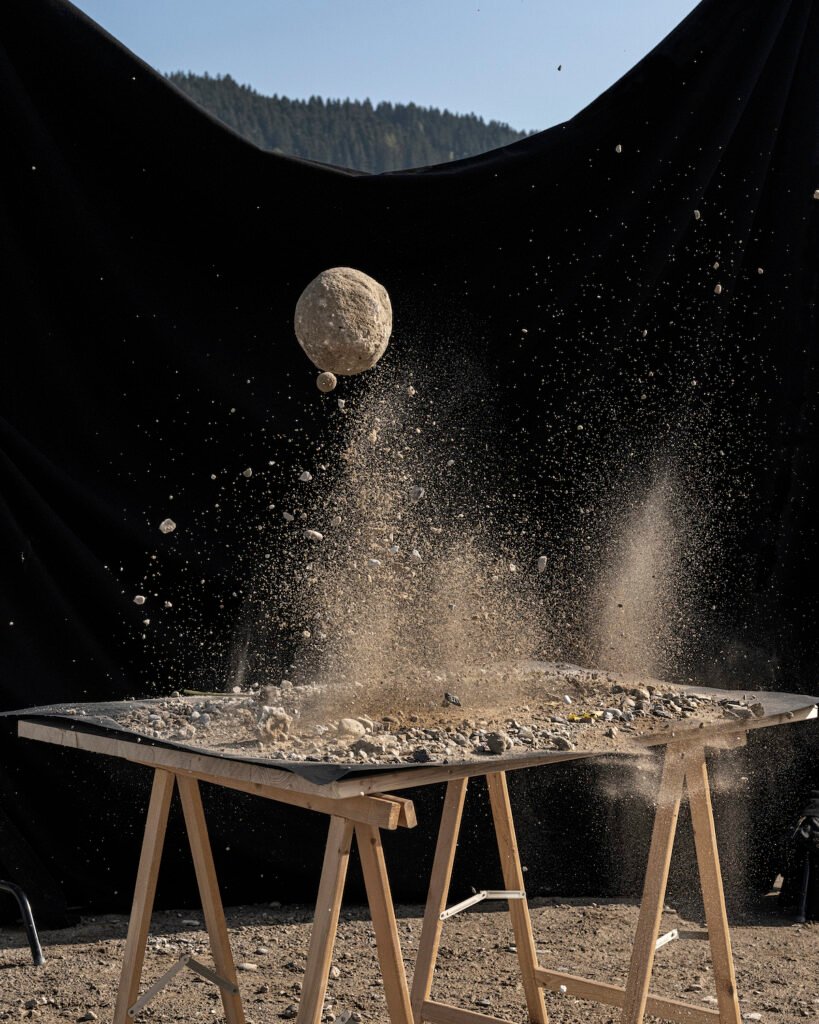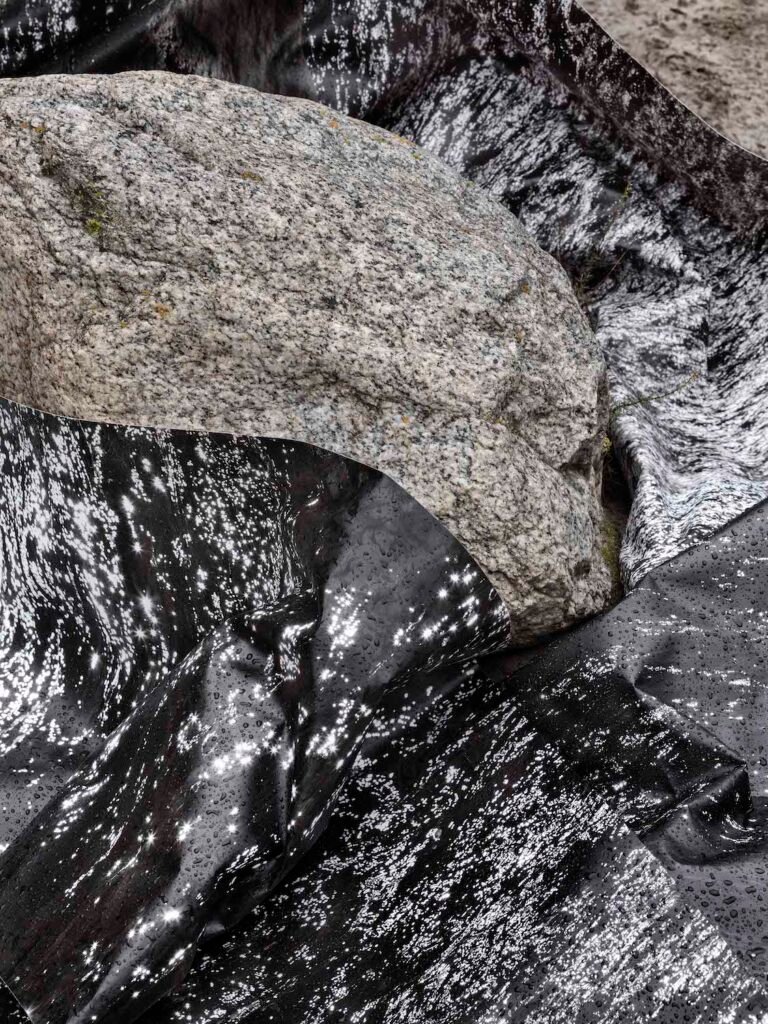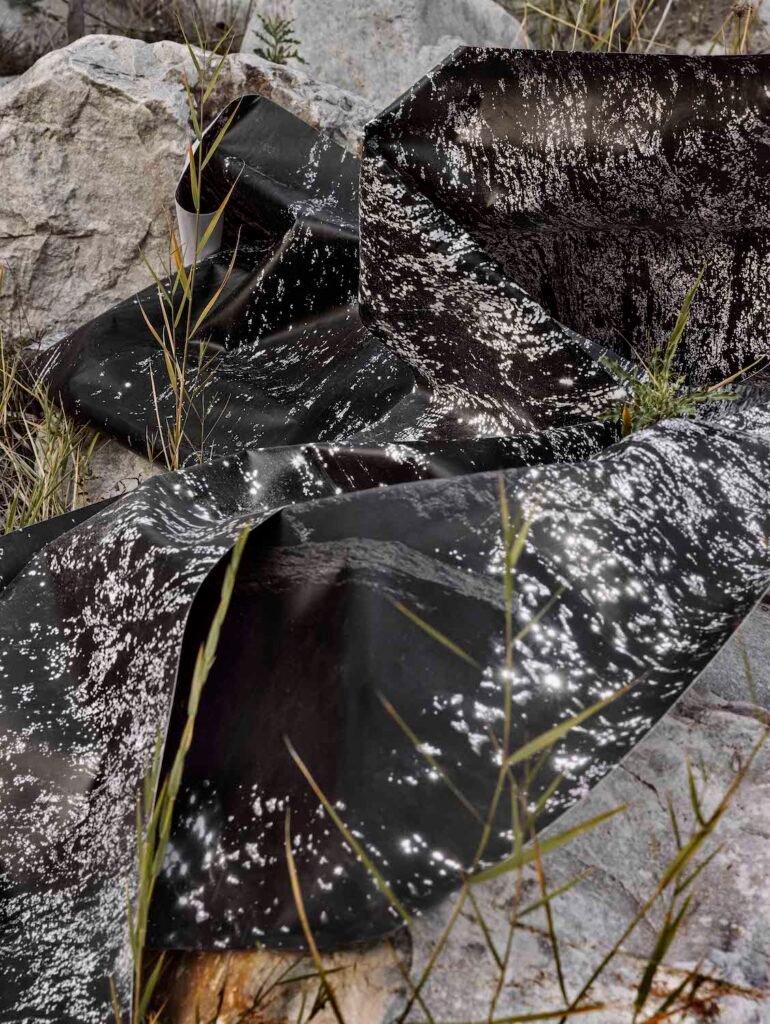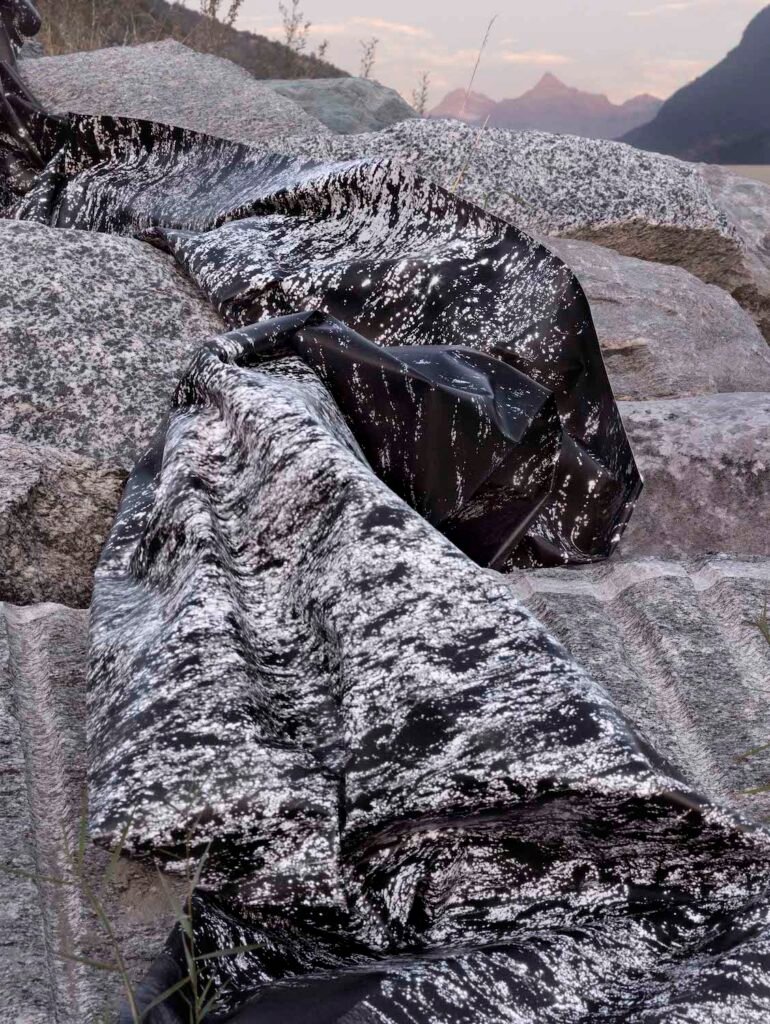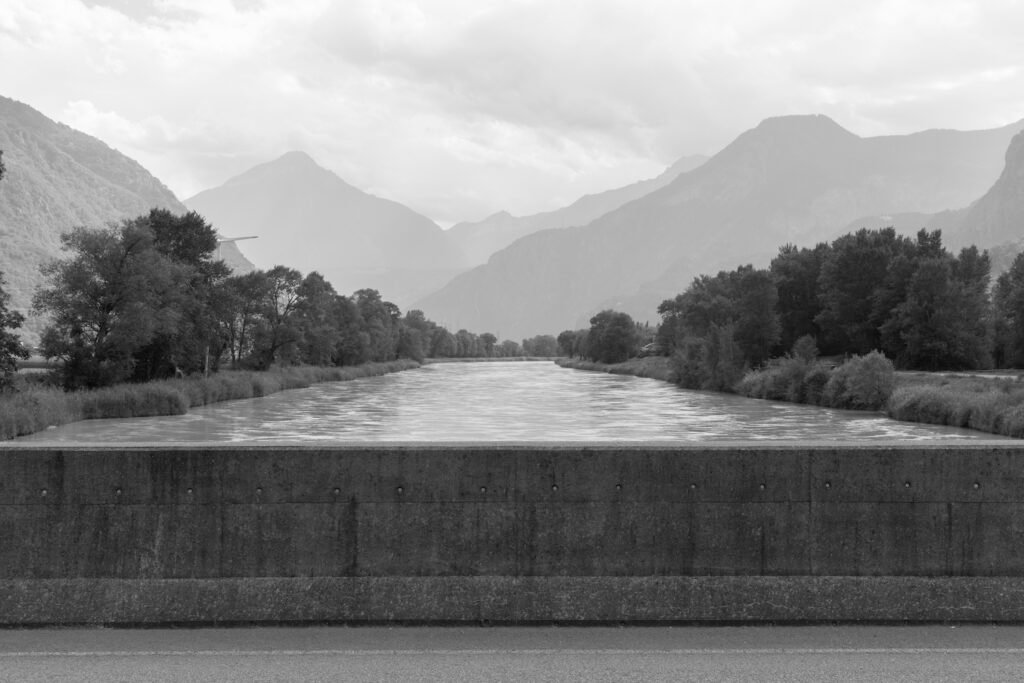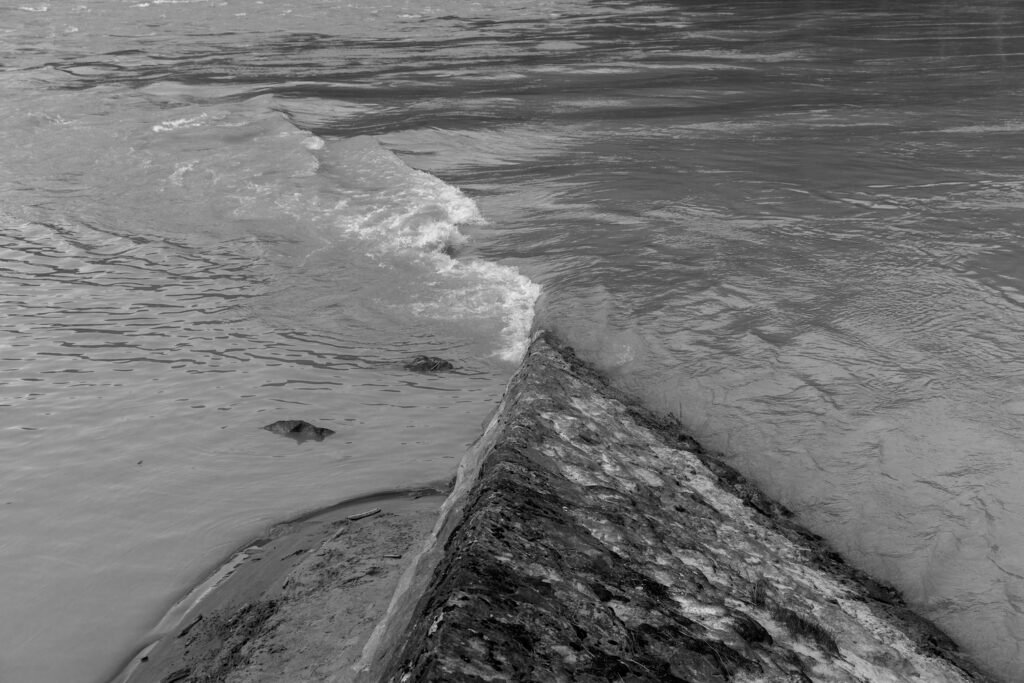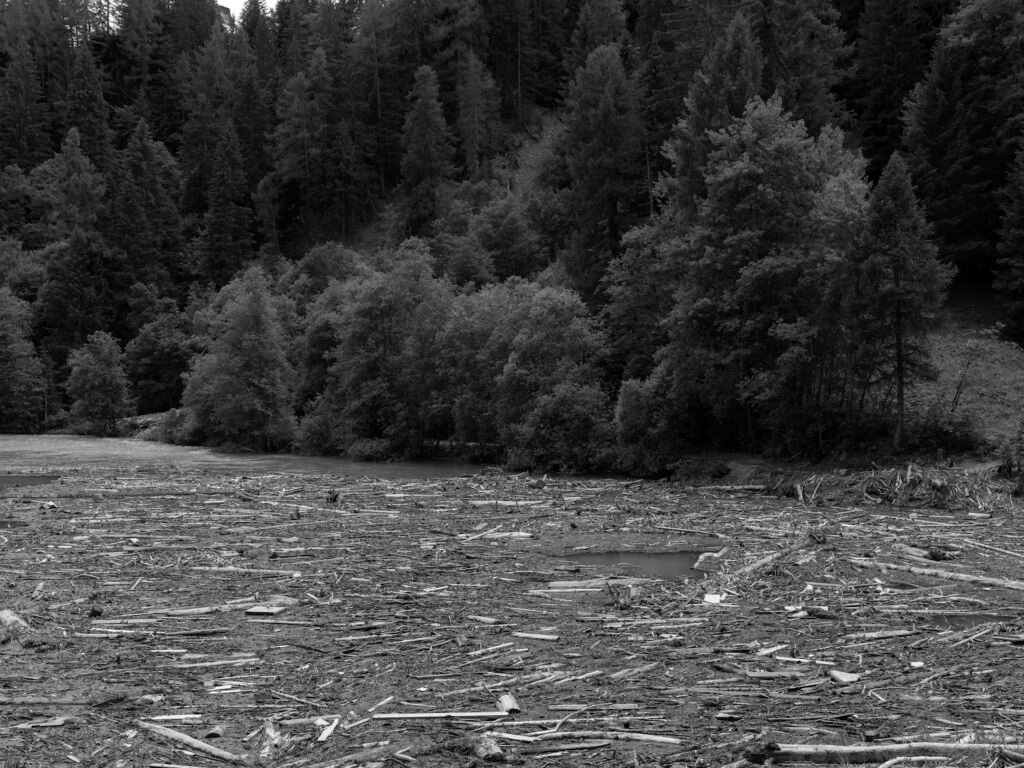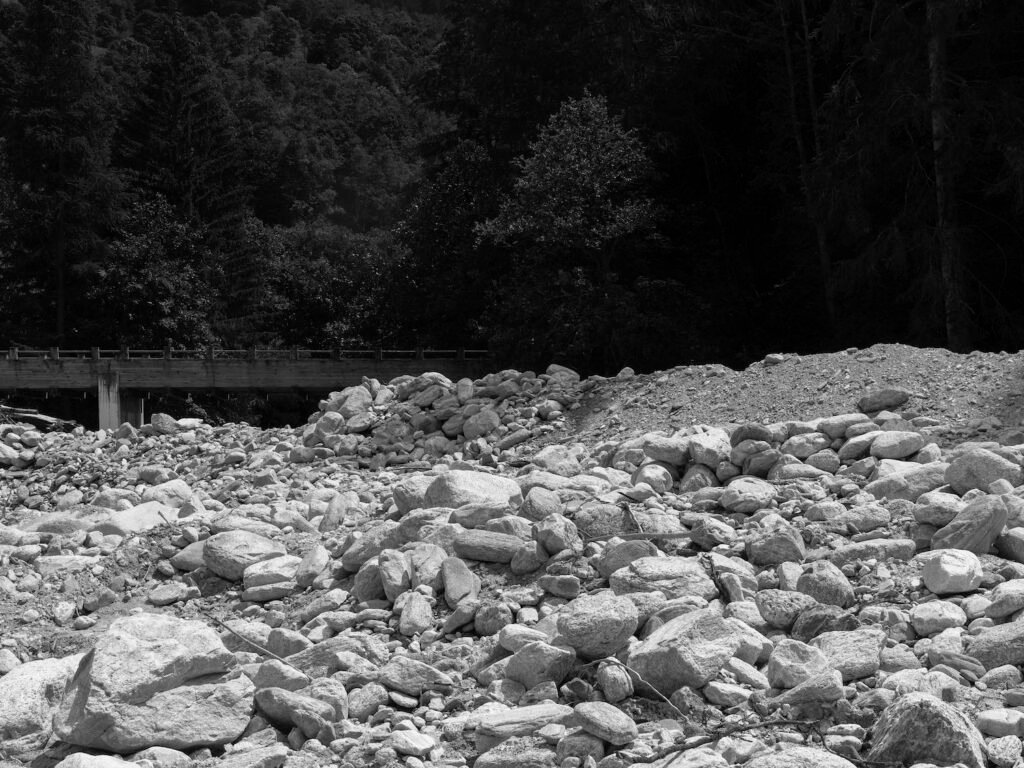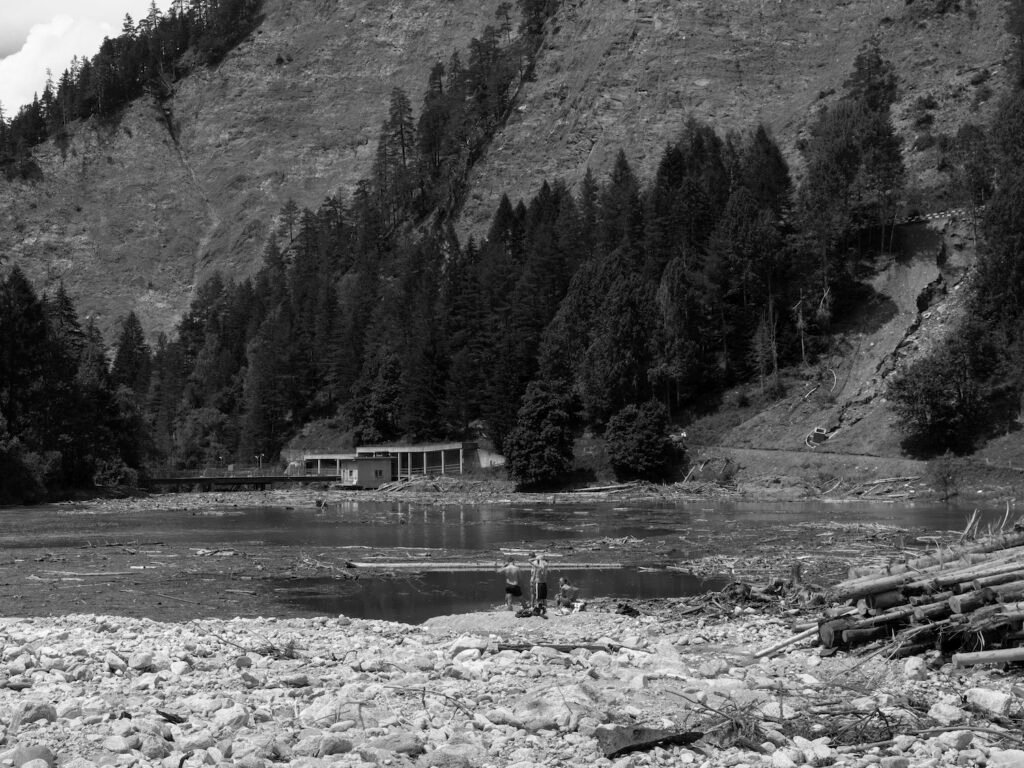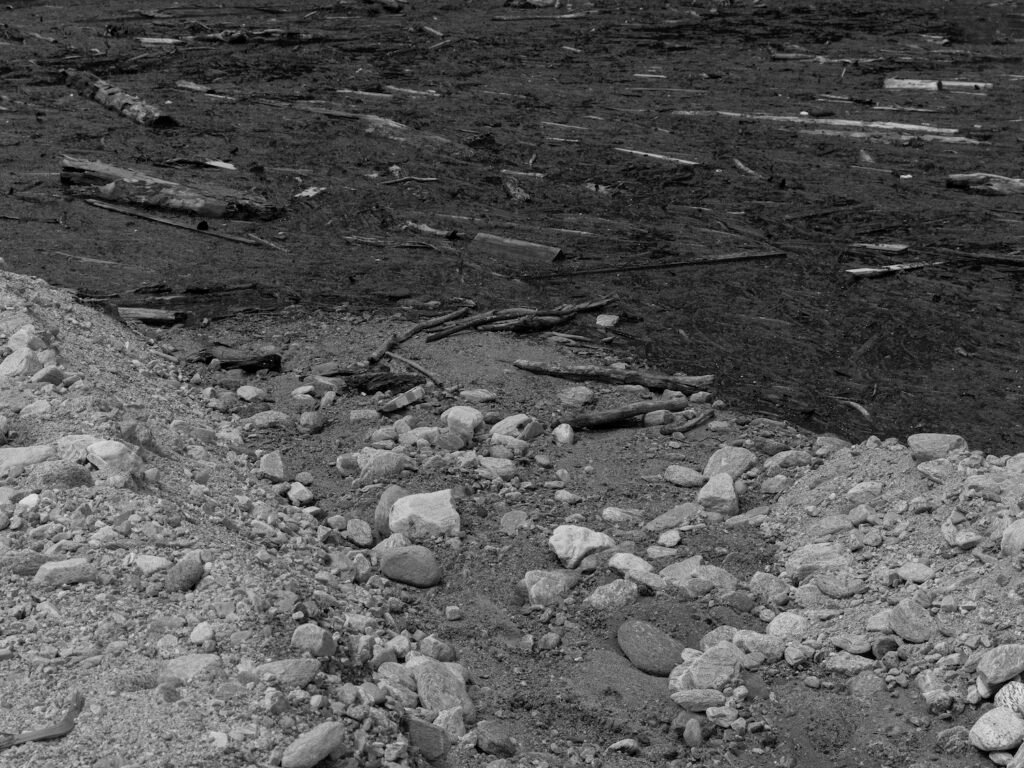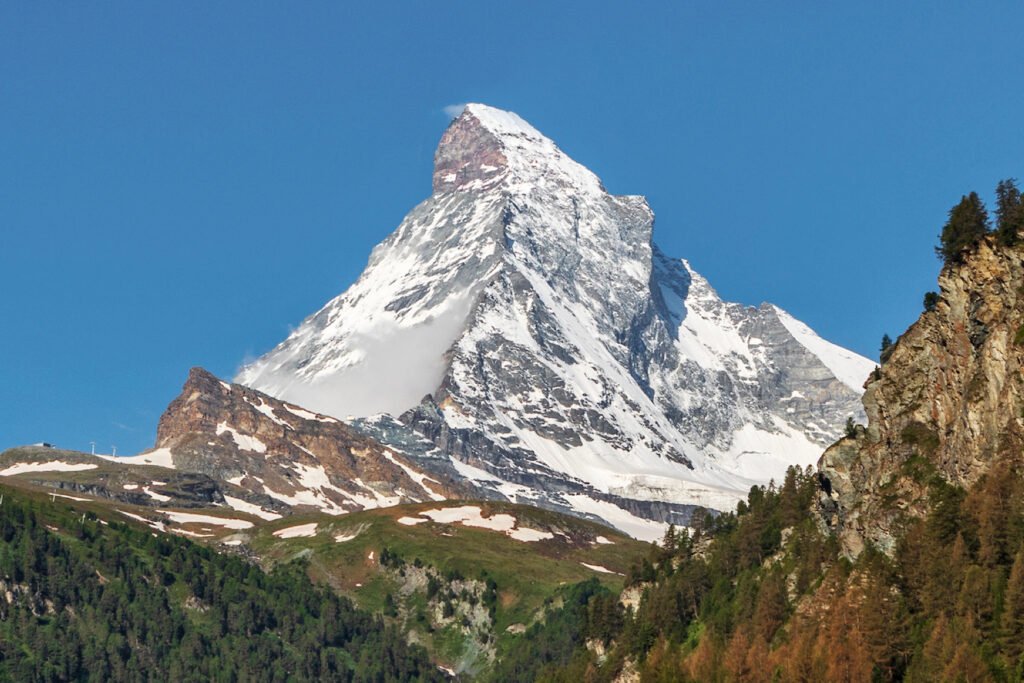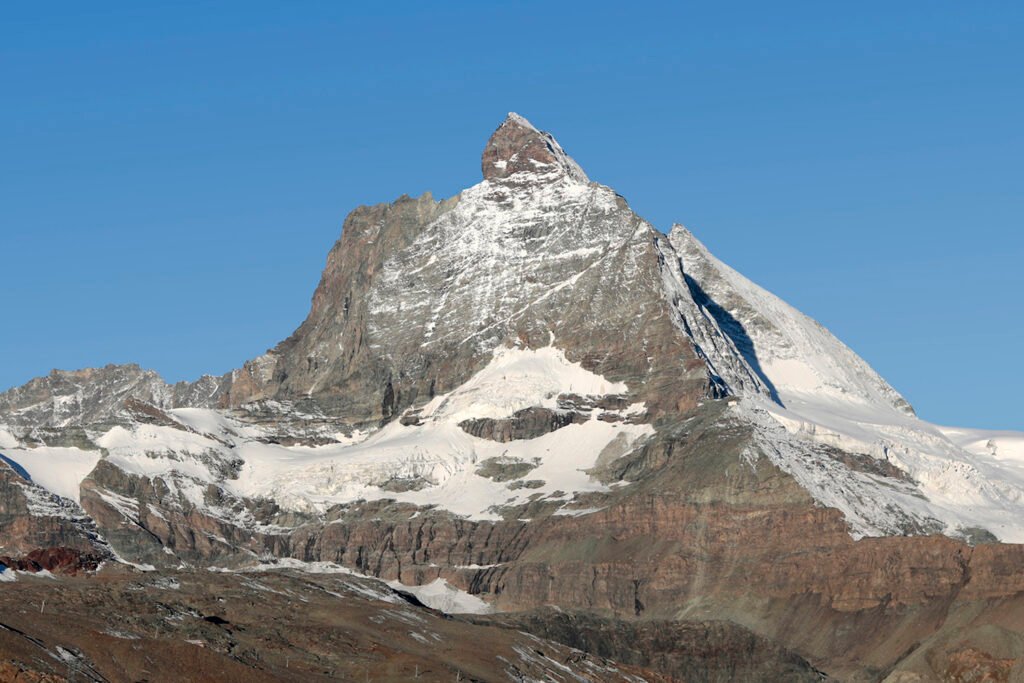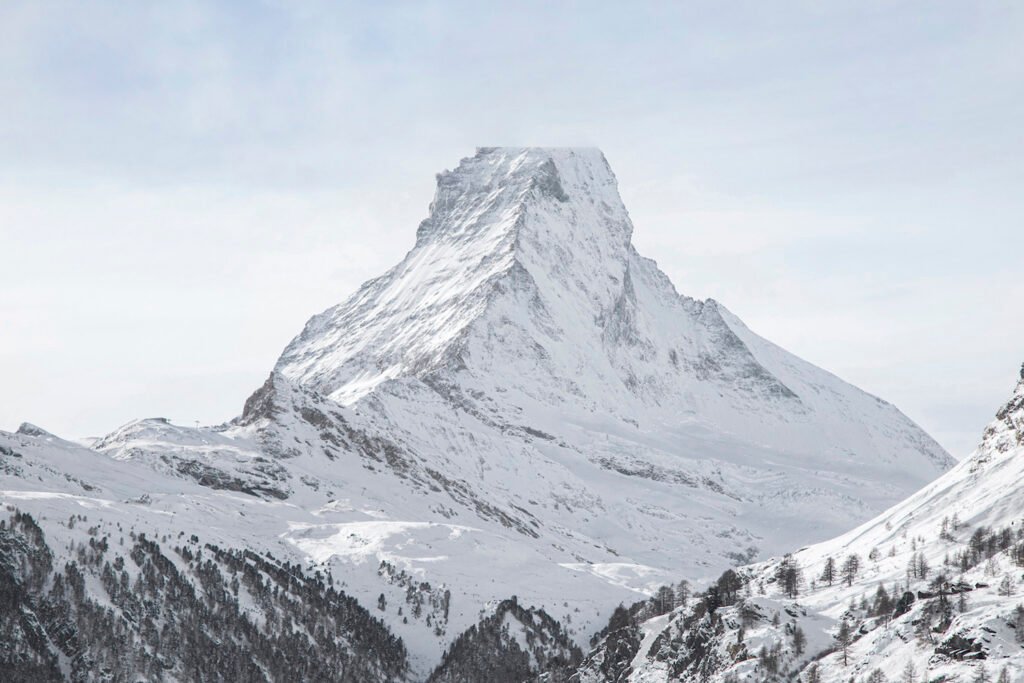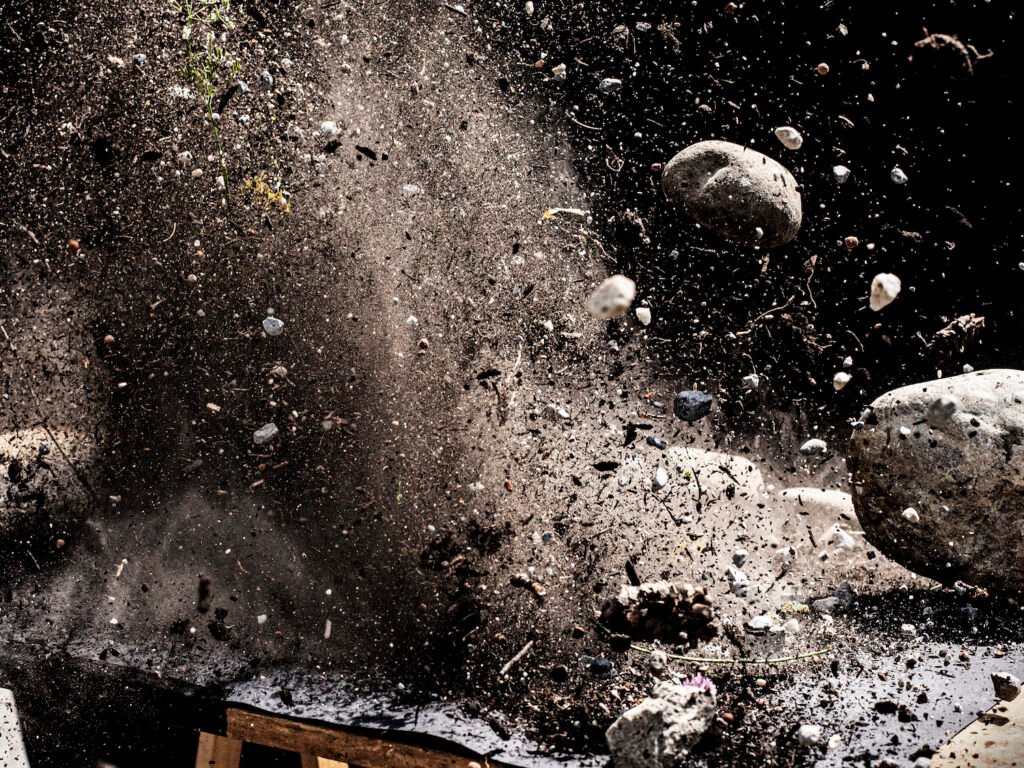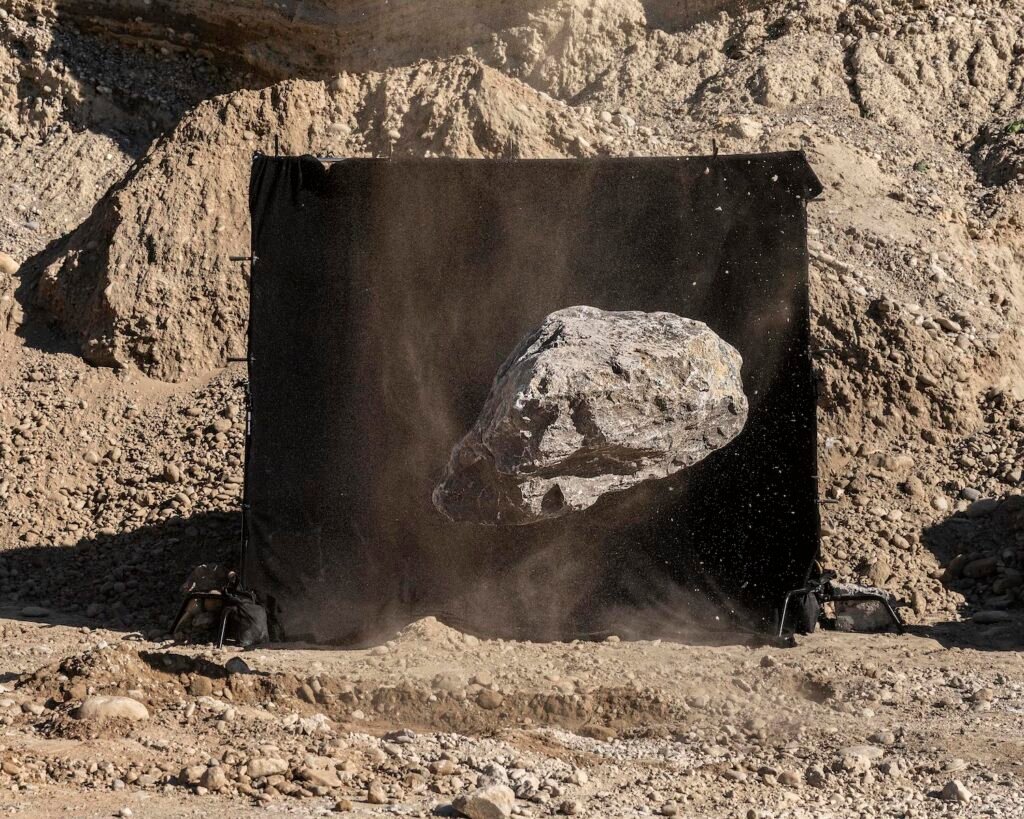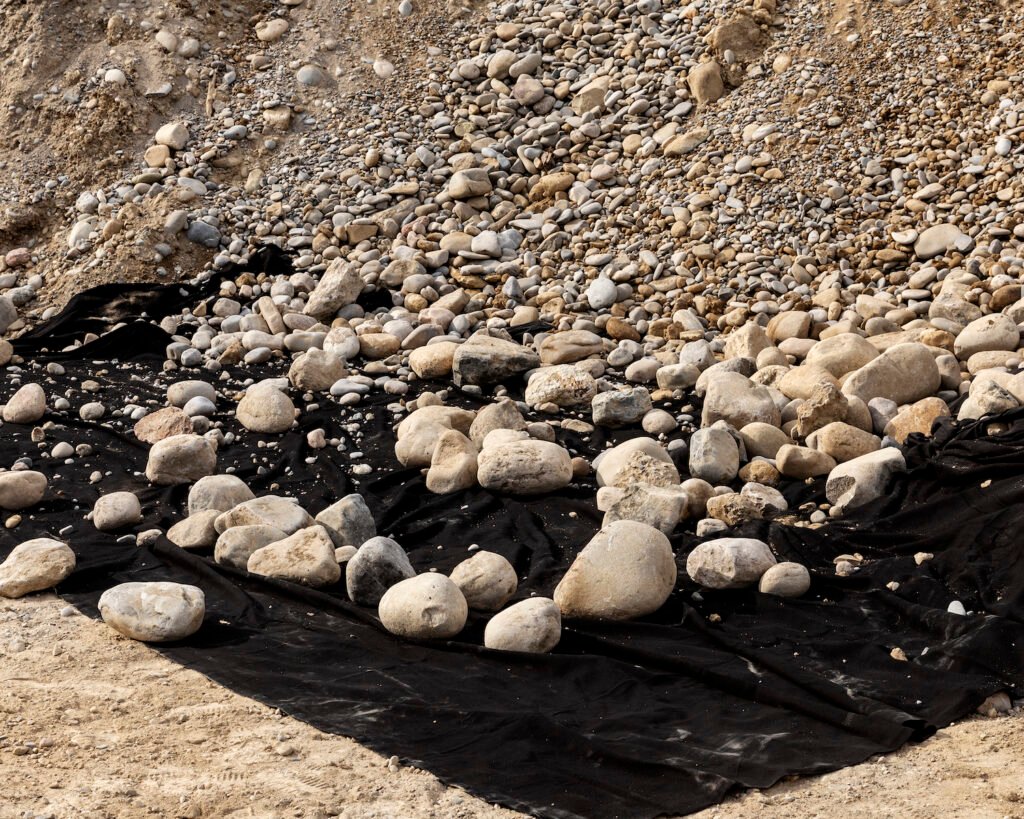How a river should flow
With the third Rhone correction, measures are being pursued to restore the beginnings of a natural watercourse. But is this still possible at all? Can the significant changes we have made to nature be restored?
In the project How a river should flow refers to human intervention in the natural course of the Rhone.
Photographs of reflecting water surfaces are re-embedded in an installation process on the banks of the Rhone. The unnatural materialities create idiosyncratic sculptures that attempt to enter into a connection with nature. The result is a dialogue with the natural originality of water bodies, which are constantly being altered by human intervention. The unusual and surreal watercourses stand in contrast to the assumption that nature can be controlled by man.
Movement in the alpine landscape
In the scientific context, the term Anthropocene is increasingly used. The term refers to a new age of the Earth that is determined by humans. This is due to the various interventions by mankind on biological, geological and atmospheric processes. As a result, the primordial nature of nature is being questioned by man and increasingly influenced by his interventions.
Human interventions, as well as the view that the earth possesses almost inexhaustible natural resources, influence the processes taking place in the Alpine region and at the same time form the trigger for the associated, serious consequences. These do not manifest themselves in natural disasters, as is erroneously assumed, but rather lead to “natural” reactions. The global natural landscape does not act with threat, but shows reactions in its own form. Humans have always tried to resist these processes. The increasingly frequent occurrences testify to the long-term effects of humans on the ecosystem. A field of tension between man and the natural environment is the result.
The free work movement in the alpine landscape is an artistic examination of various processes in the alpine mountain landscape. The result is a fragmentary inventory that refers to various scientific facts. For this purpose, various topics such as rockfall, thawing of the permafrost or man-made protective measures are processed in an artistic form of representation. The focus is on the perception of the various alpine natural hazards and the connection to human intervention in order to mitigate, predict or even completely contain the natural hazards. By means of specially created situations, the visual artist Pedro Rodrigues constructs new ways of interpretation. The starting point for the work is the geological changes taking place in the mountains.
Due to global warming, glaciers, which are often used to illustrate climate change, are disappearing all over the world. However, this is also associated with other effects that are often ignored. This is where the work should start and create a more complex approach to the changes taking place.
The pictures show an alienated Matterhorn. Over the last few decades, this mountain has gradually been developed into a tourist hotspot through marketing. Due to the movements in the alpine region, the Matterhorn is also changing. But is this change also perceived by outsiders?
A staging creates access to natural hazards. Processes that happen in seconds are captured through the photographic process. The enormous power is shown in the approach and at the same time our urge to control is questioned through the created situation. Furthermore, the attitude is represented in today‘s world that we as humans can control and influence nature.
It is still difficult to predict where the stones will fall. In a controlled environment, I triggered an independent rockfall and recorded movements and the associated noises in a video recording.
Increasing surveillance by cameras is also being practiced in the Alps. Natural reactions are increasingly being recorded or documented photographically. Various institutions and the canton of Valais have created access for this project in recent years. The result is an extended form of observation in various areas.
Pedro Rodrigues. Through precise and attentive observations, Pedro Rodrigues lends his pictures unusual perspectives. He is particularly interested in socio-critical themes. Born in the south of Portugal and raised in Saas-Fee, he embeds his roots and origins into his art throughout. His long-term projects focus on topics such as working conditions in the hotel industry, climate change in the Alps and the illegal trade in end-of-life vehicles. Pedro Rodrigues has been working as a freelance photographer since 2012; over time, he has expanded his work to include multimedia installations. His works have been exhibited nationally and internationally on several occasions.
